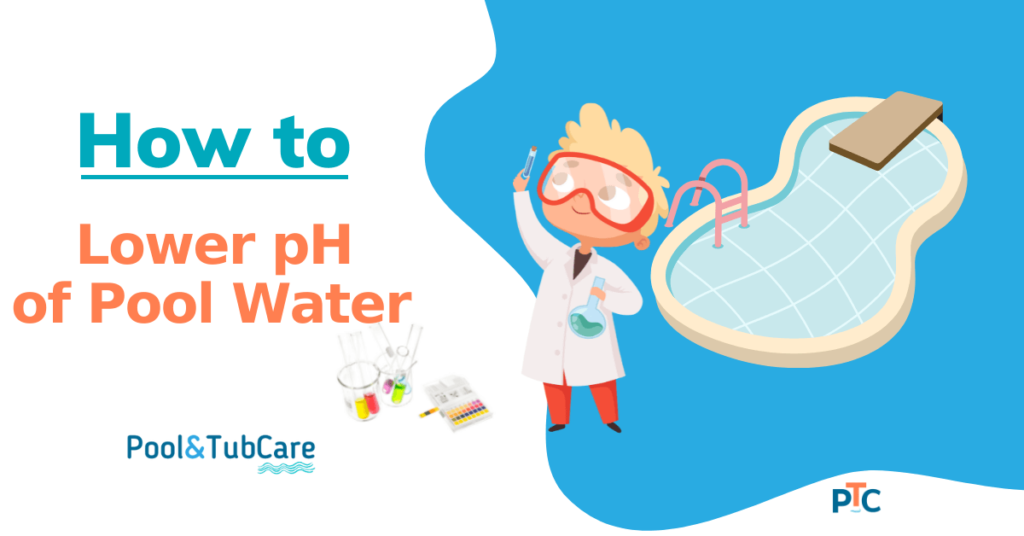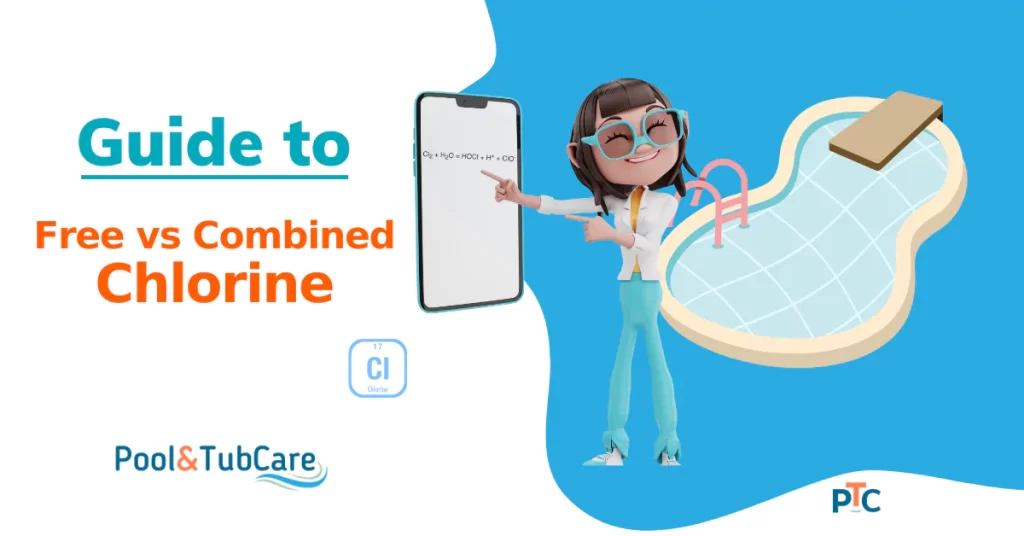Every pool owner deals with chlorine almost every other day. Chlorine is the chemical that keeps your pool clean and safe for swimming.
Chlorine is toxic to bacteria and algae and is a strong oxidizer that breaks down organic pollutants like sweat, oil, and dead skin cells other than ammonia.
When you go to a pool store to buy chlorine, the guy might ask you..which type of chlorine do you want? Stabilized or Unstabilized chlorine!
You may wonder how they are different and if it really matters which one you are using.
The short answer is yes, it matters according to the needs of your pool, whether you should use stabilized or unstabilized chlorine.
In this article, I will tell you how they are different and when to you which one to keep your pool clean.
What is Stabilized Chlorine
When you add cyanuric acid (aka pool stabilizer) to your pool, it protects free chlorine molecules from the sunlight.
Without a pool stabilizer, free chlorine in your pool breaks down within a few hours upon direct exposure to UV rays. When adding pool stabilizer with chlorine, the life of chlorine increases to 3 to 5 days.
You can add pure cyanuric acid (stabilizer) separately in the pool, or it comes premixed with chlorine.
The type of chlorine that comes with a stabilizer in the composition is called stabilized chlorine.
Stabilized chlorine mainly comes in two forms, dichlor power, and trichlor tablets.
Sodium Dichlor:
Sodium dichlor has around 50 to 60% of chlorine and has a near-neutral pH of 6.5. Many people use it to shock the pool, but I don’t recommend it, as it can increase the CYA levels drastically.
It mainly comes in powder form and is easier to dissolve in water than cal-hypo. You can either directly add it to the pool water or add it after mixing it in a bucket.
Trichlor:
Trichlor is generally found in stabilized chlorine tablets that contain around 90% active chlorine.
They release chlorine slowly in the pool and can be automated with chlorine feeders.
Related: Ideal chlorine levels for your pool!
When to Use Stabilized Chlorine
If you have an indoor pool, you don’t need to use stabilized chlorine as there is no sunlight, and your chlorine does not need protection.
In the case of outdoor chlorine pools, you need to use stabilized chlorine, as unstabilized chlorine will be broken away almost immediately.
Keep an eye on CYA levels in the water, and if they are below 50 ppm, you can keep using stabilized chlorine.
Benefits of Stabilized Chlorine
Stabilized chlorine offers many benefits for pool owners, such as:
- Chlorine works longer: Stabilized chlorine is protected from the sun by CYA, so it can work for longer and protect your pool against harmful pollutants
- Less Hassle: As chlorine stays in the pool for up to 5 days, you don’t need to add chlorine daily. You can even automate the process by using chlorine tablets in an automated chlorinator
- Cost-effective: Chlorine is not a cheap chemical, and you need it all the time for your pool. If you use stabilized chlorine, your cost can come down by 70 to 80%
Drawbacks of Stabilized Chlorine
Though there are many benefits of stabilized chlorine for pool owners, there are a few things you keep in mind while using them.
If you are regularly using stabilized chlorine, the levels of CYA can go beyond 50 ppm levels.
- It makes chlorine less effective as most of the chlorine gets over-stabilized, and very less free chlorine is available, leading to chlorine lock
- High levels of CYA can lead to cloudy water and the growth of algae
- Reducing the CYA levels requires a lot of effort. You need to refill a part of the pool water with fresh water to get CYA down
- A high concentration of CYA is damaging to the pool plaster and vinyl lining
What is Unstabilized Chlorine
The chlorine with a stabilizer is called stabilized, while without it is called Unstabilized chlorine.
This is the type of chlorine that does not come with cyanuric acid combined. So, it is not protected against sunlight.
Unstabilized chlorine generally comes in three types, calcium hypochlorite, sodium hypochlorite, and lithium hypochlorite.
Calcium hypochlorite:
Cal hypo contains around 65-70% chlorine and calcium. This is the most popular option as it is the cheapest. It is also slow-dissolving chlorine and works slowly.
Its pH is 12, which imbalances the pool chemistry, and you need to add other chemicals to lower the pH of pool water.
This is the best option to shock your pool, though if the calcium levels in your pool are high, you should use other alternatives.
Lithium hypochlorite:
This chlorine is a fast-dissolving, easy-to-use powder. Lithium is lethal to microbes like algae and hence has more sanitizing power.
You can swim in the pool soon after using it. But, it is more expensive and difficult to find.
Sodium hypochlorite:
It is made of around 10-15% chlorine and sodium. Liquid chlorine is synthesized by compressing the chlorine gas with caustic soda.
This unstabilized chlorine works very fast as it is already dissolved.
It is best for commercial pools and can be the best option to break the chlorine demand.
When to Use Unstabilized Chlorine
You can use unstabilized chlorine in the case of indoor pools, as there is no sunlight. Other than that, unstabilized chlorine is recommended for hot bathtubs as some bacteria require higher redox potential that is not there in stabilized chlorine.
You should switch to unstabilized chlorine when your pool CYA levels are above the upper limit of 50 ppm.
For shocking the pool, you should use unstabilized chlorine as stabilized chlorine can increase the CYA levels very quickly since you will use a lot of chemical for shocking.
Benefits of Unstabilized Chlorine
Here are a few reasons why unstabilized chlorine can be better for your pool:
- Higher redox potential: This means more free chlorine is available at the given time for the killing of unwanted pathogens compared to stabilized chlorine, where only 3% free chlorine is available
- Does not increase CYA levels: If you are already suffering from high CYA levels in your pool, unstabilized chlorine provides a better alternative to sanitize your pool. You can add CYA separately according to your needs unless a fixed amount in stabilized chlorine
- Available in Liquid form: It is not that big an advantage but can become handy for bigger pools like commercial pools where there is a lot of chlorine requirement. Liquid containers are easy to handle
- Can be used as pool shock: Unstabilized chlorine is the best option to shock your pool and increase the chlorine levels without increasing CYA
Drawbacks of Unstabilized Chlorine
Other than the above benefits, there are a few reasons you might not want to use unstabilized chlorine.
- It is not protected against the sun and can get used up pretty quickly in outdoor pools. You need to add more amount to keep up the chlorine levels
- You need to add CYA separately, adding to the costs
You Need Both Stabilized and Unstabilized Chlorine Depending On Pool Needs
Both forms of chlorine get the job done. Stabilized chlorine does it slowly, but it last longer. On the other hand, unstabilized chlorine does the job very fast, but it does not last long in the sun.
Depending on your pool conditions, like levels of CYA in the pool, indoor or outdoor pool, and your preference, you can choose any of these chlorine forms, and they will work to keep your pool clean.
Now you know the difference between the two, and when to use them, you can keep switching between them as per need.





